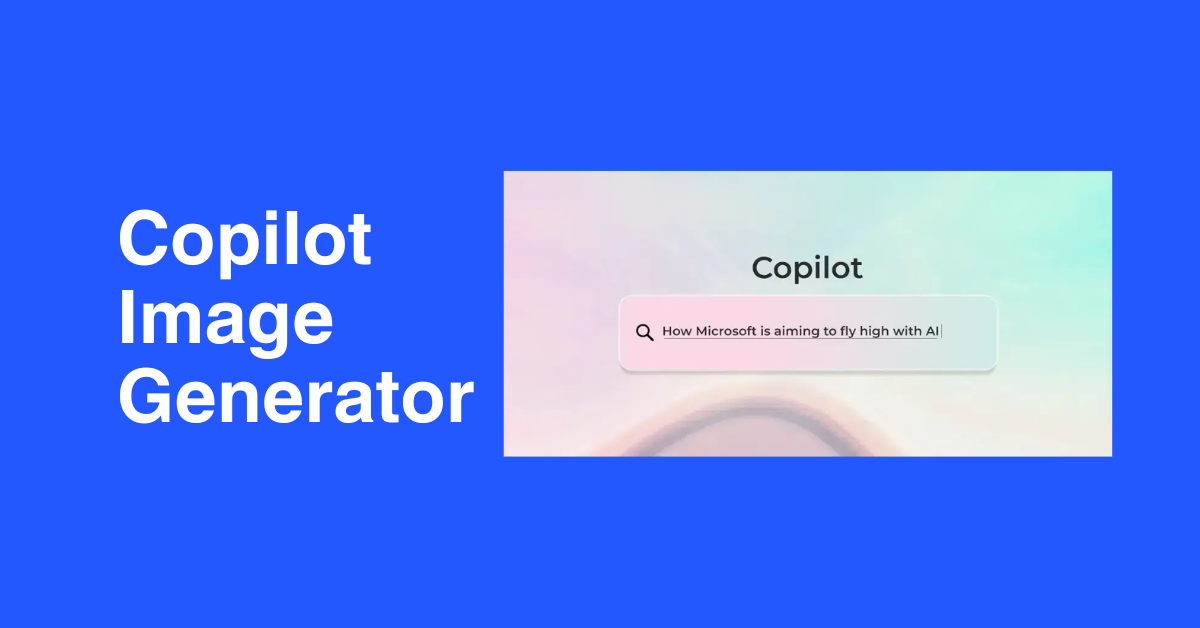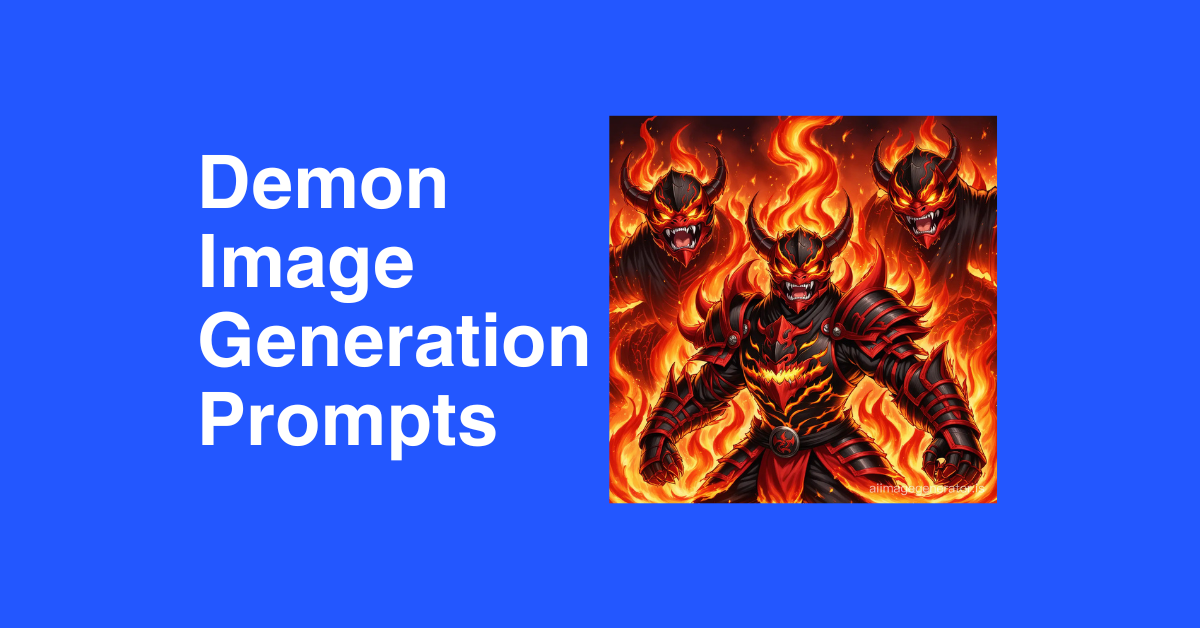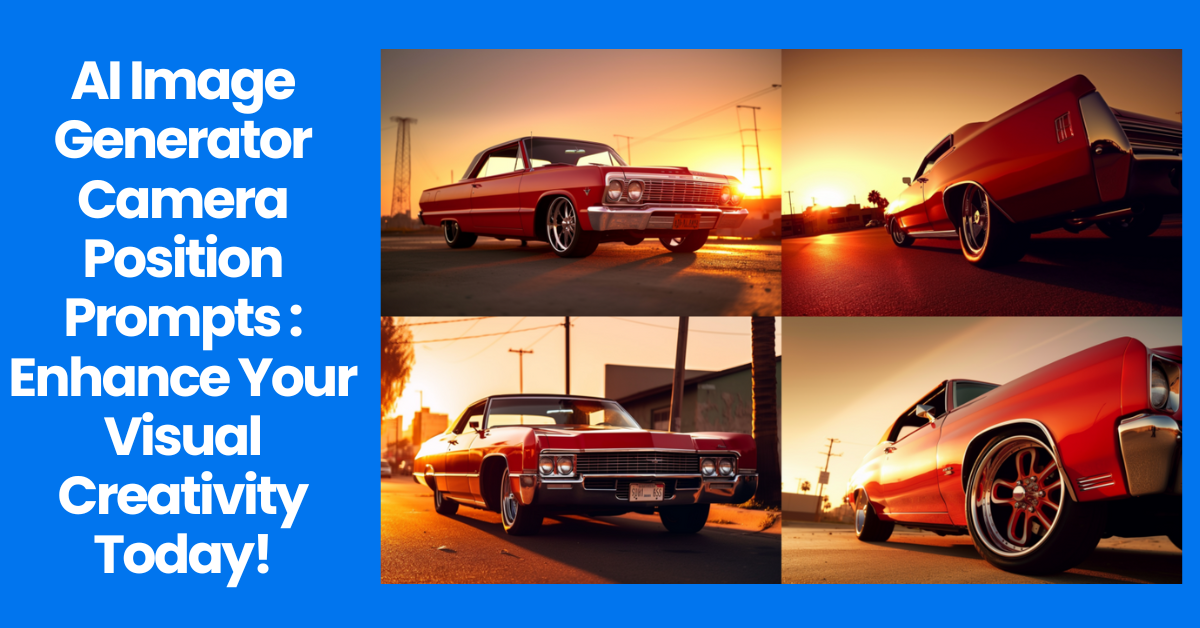
AI Image Generator Camera Position Prompts: Enhance Your Visual Creativity Today!
- Image Generators
- November 9, 2024
- No Comments
In the burgeoning field of artificial intelligence, image generation has emerged as an exciting frontier that melds creativity with technology. Among the various techniques that enhance this process, AI image generator camera position prompts stand out as a powerful tool for artists and designers alike. These prompts allow creators to dictate how they want their images framed and perceived, enabling a depth and richness that can turn a simple image into a breathtaking piece of art. This blog post will delve deeply into the world of camera position prompts, exploring how they can be harnessed in AI image generation to create stunning, lifelike scenes with emotional depth and narrative intrigue.
AI Image Generators: How to Use AI Image Generator Camera Position Prompts
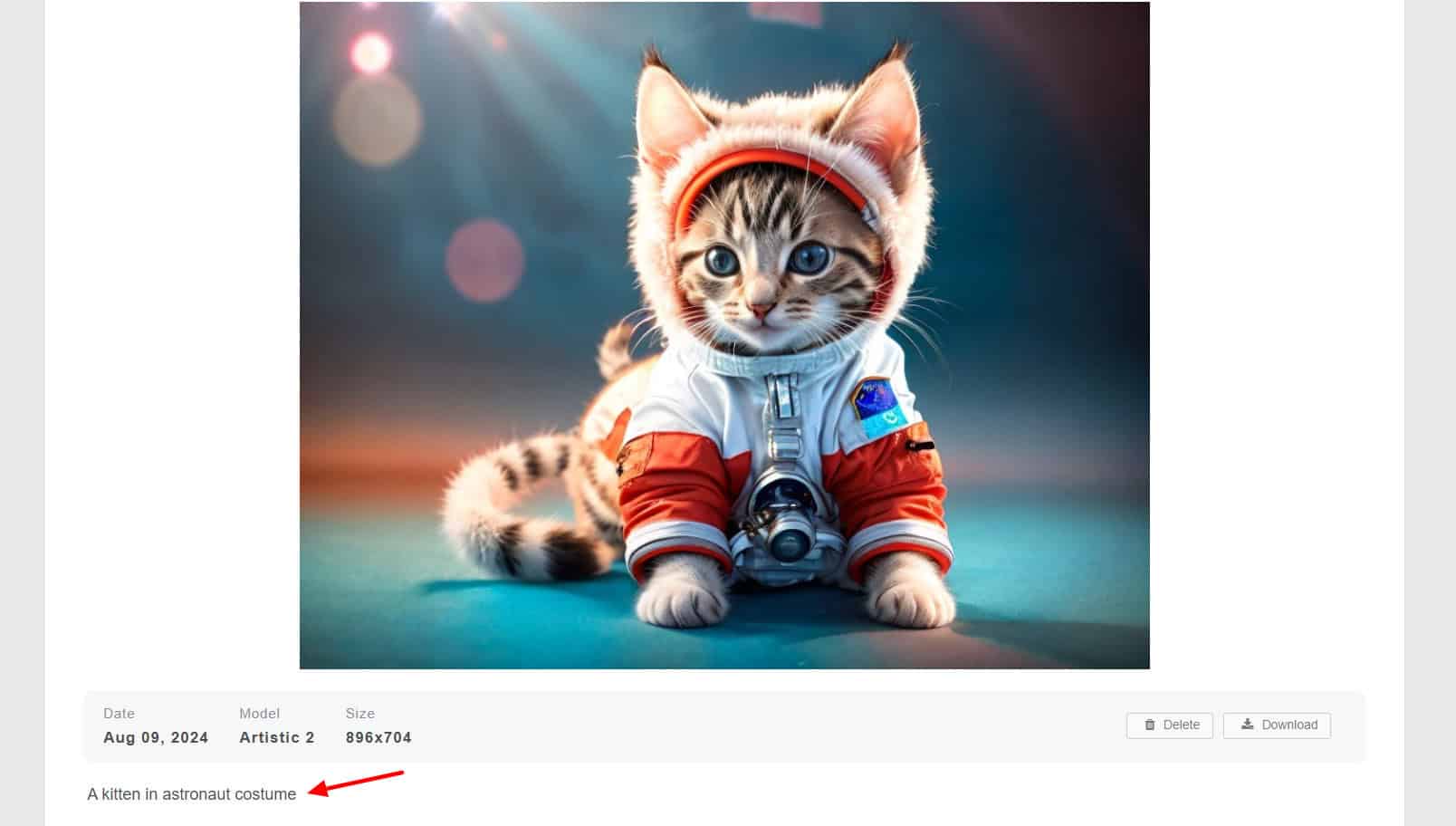
The advent of AI image generators has transformed the way we think about photography and visual storytelling. By effectively using camera position prompts, creators can influence the viewpoint from which an image is captured, shaping not just how a scene looks, but also the emotions it evokes.
Understanding Camera Position Prompts
At its core, a camera position prompt refers to the instructions given to an AI to dictate the perspective of the image being generated. This could encompass aspects like angle, distance, and orientation, all of which play a pivotal role in determining how viewers interpret a scene.
When creating an image, a specific camera angle can dramatically alter the perception of the subject. For instance, a low-angle shot often emphasizes height and power, whereas a high-angle shot can suggest vulnerability and insignificance. By manipulating these positions through thoughtful prompts, one can guide the AI to produce images that resonate on a deeper level.
The Importance of Perspective
Perspective is a foundational element in both photography and image generation. It directly influences how viewers engage with the scene. Using camera position prompts strategically allows creators to explore different perspectives, ensuring that each image conveys a unique story or emotion.
For example, consider a serene landscape photograph taken at eye level compared to one taken from a bird’s-eye view. The former invites the viewer into the space, fostering a sense of intimacy and connection. In contrast, the latter offers a broader view, highlighting patterns and relationships within the scene. By leveraging camera position prompts, artists can choose which narrative they wish to convey.
Practical Applications in AI Image Generation
Integrating camera position prompts into AI image generation is not merely an academic exercise; it has practical implications across various fields. From digital marketing campaigns and concept art to virtual reality experiences, the ability to control perspective enhances the overall impact of the visuals produced.
A graphic designer working on promotional material for an outdoor adventure company might utilize low-angle shots of climbers against majestic mountains to evoke feelings of excitement and thrill. Conversely, an artist creating illustrations for a children’s book may prefer playful, eye-level angles that foster a sense of wonder and accessibility.
Mastering the Art of Image Generation with Camera Position Prompts

As more creators explore AI image generation, mastering the intricacies of camera position prompts becomes essential. The artistry lies not only in the selection of a prompt but also in understanding how subtle changes can lead to vastly different results.
Selecting the Right Camera Angle
Choosing the right camera angle involves more than just aesthetics; it plays a fundamental role in storytelling. A well-chosen angle can draw viewers into the narrative, encouraging them to engage with the image on multiple levels.
For instance, if you are generating an image of a bustling city street, a low-angle prompt can accentuate towering skyscrapers, making the viewer feel small amidst the urban landscape. Alternatively, a bird’s-eye view can emphasize the complexity of city life by showcasing intricate patterns formed by streets and vehicles.
Exploring Depth of Field
Depth of field is another powerful aspect influenced by camera position prompts. A shallow depth of field draws focus on the subject while blurring the background, creating an intimate atmosphere. This technique is effective in portrait photography where the subject’s features need to shine without distractions.
On the other hand, a deep depth of field ensures clarity throughout the entire image, suitable for landscapes where context is vital. When employing AI image generators, asking for either a shallow or deep focus can significantly affect the mood and interpretation of the generated scene.
Incorporating Lighting Effects
Lighting plays a crucial role in shaping the mood of any image. By controlling camera position in conjunction with the available ambient light, creators can craft visually stunning scenes that captivate their audience.
For example, positioning the camera to capture the golden hour—the time shortly after sunrise or before sunset—can lend warm tones and long shadows that add drama and richness to an image. On the contrary, harsh lighting from overhead sources can create stark contrasts, enhancing textures and details.
Unlocking Creative Possibilities with Camera Position Prompts in AI Image Generation
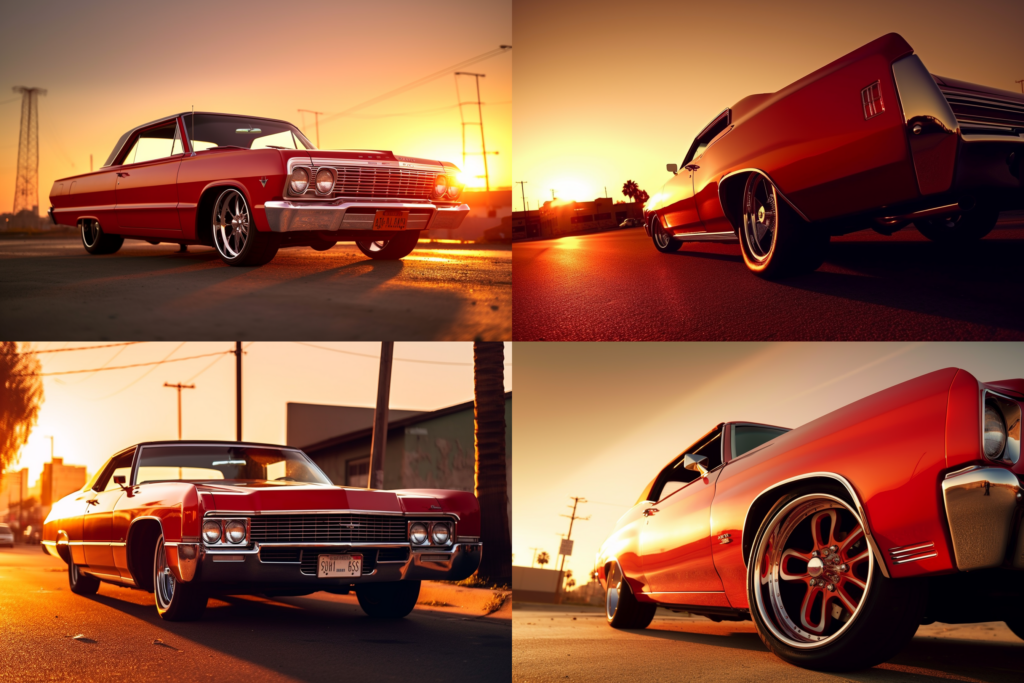
One of the most exhilarating aspects of AI image generation is the sheer creative freedom it affords. Camera position prompts can be leveraged to push boundaries and unlock innovative possibilities that traditional photography might limit.
Creating Dynamic Compositions
Dynamic compositions can breathe life into otherwise static images. By utilizing camera position prompts, creators can devise scenes that invite movement and energy. For instance, capturing a dancer mid-leap from a low angle can imbue the image with kinetic energy, bringing a sense of action and grace.
Additionally, experimenting with unconventional angles—such as extreme close-ups or off-center framing—can yield unexpected results and inspire new ways of seeing familiar subjects. This creative exploration encourages artists to step outside their comfort zones and challenge conventional norms.
Blending Genres and Styles
The integration of camera position prompts can foster genre-blending in AI-generated images. By shifting perspectives, artists can merge elements from different styles, resulting in hybrid creations that defy categorization.
Imagine combining the elegance of classical portraiture with the spontaneity of street photography. Employing a strategic camera angle that captures the subject in their environment allows for a narrative that seamlessly intertwines both genres. This approach broadens artistic expression and opens doors to unique creative explorations.
Embracing Experimentation
AI image generation thrives on experimentation, and camera position prompts serve as an excellent vehicle for this practice. Encouraging yourself to play with varying angles, distances, and perspectives can lead to surprising discoveries.
For instance, you might start by generating an image of a still life from a straight-on position, only to realize that a slightly tilted angle brings forth dynamic tension. Experimentation fosters adaptability and resilience in the creative process, allowing artists to refine their vision over time.
The Power of Perspective: Using Prompts to Control Camera Position in AI Image Generators
The ability to manipulate perspective in AI image generation cannot be overstated. As artists become more adept at controlling camera position prompts, they gain greater agency over how their images communicate meaning.
Telling Stories Through Angles
Every angle tells a story, and the choice of camera position can evoke distinct narratives. Perspectives can shape themes of isolation, connection, triumph, or defeat simply by changing the camera’s point of view.
For instance, depicting a solitary figure from above can amplify feelings of loneliness, while a close-up shot from a low angle can communicate strength and presence. Using prompts thoughtfully can empower artists to curate stories that resonate with audiences on an emotional level.
Enhancing Emotional Impact
Emotion is a driving force behind visual narratives, and camera position prompts can heighten this impact. By selecting angles that reflect the mood of the scene, creators can connect with viewers more profoundly.
Consider a haunting landscape at dusk—a low-angle shot emphasizing looming trees can convey an eerie undertone, instilling a sense of foreboding. In contrast, a bright, upward-facing angle can transform the same scene into a hopeful vista filled with possibility. The choices made through camera position prompts ultimately shape how audiences experience and interpret the generated imagery.
Building Context and Scale
Camera position also plays a pivotal role in establishing context and scale within an image. By adjusting the viewpoint, creators can provide viewers with a clearer understanding of the relationship between subjects and their environments.
For example, in an image of a hiker on a mountain trail, a wide-angle shot that captures the vastness of the landscape can underscore the magnitude of the journey. Conversely, a close-up of the hiker’s face may focus on determination, offering insights into their emotional state. Each adjustment serves to build layers within the narrative, enriching the viewer’s experience.
Beyond the Basics: Advanced Techniques for Camera Position Prompts in AI Image Generation
As creators become more proficient in using camera position prompts, they may seek advanced techniques to elevate their images further. By delving into sophisticated applications, artists can harness the full potential of AI image generation.
Layering Perspectives
Layering perspectives allows artists to construct complex images that convey multifaceted narratives. By generating multiple viewpoints and merging them, creators can develop a richer visual tapestry that engages viewers in new ways.
For instance, an artist might create a composite image where the foreground features a close-up of a flower, while the background depicts a sprawling garden landscape. Such layering invites exploration, prompting the viewer to navigate between elements and uncover hidden stories.
Utilizing Non-Traditional Framing Techniques
Non-traditional framing techniques can add intrigue and interest to AI-generated images. By deliberately breaking conventional rules of composition, artists can produce striking visuals that command attention.
For example, placing subjects off-center, incorporating negative space, or utilizing diagonal lines can create dynamic tension within an image. These techniques encourage viewers to reexamine their perceptions and engage actively with the artwork.
Harnessing Motion and Change
Incorporating motion and change into AI image generation can invigorate static images. Camera position prompts can be employed to simulate movement, adding depth and dynamism.
Imagine a scene of cascading water captured through a low-angle perspective, accentuating the flow and power of the water. Alternatively, depicting the transition from day to night can evoke a sense of time passing. By embracing motion, artists can connect viewers with a visceral experience that transcends the visual.
Camera Position Prompts: Shaping the Narrative in AI Image Generation
Narrative is at the heart of visual storytelling, and camera position prompts are instrumental in crafting compelling tales through imagery. Artists who master these prompts can weave rich narratives that resonate with audiences.
Crafting Visual Narratives
Using camera position prompts to craft visual narratives requires a thoughtful approach. Each choice made throughout the image generation process contributes to the overarching story being told.
For instance, a sequence of images depicting a character’s journey might utilize varying camera angles to track their evolution. Starting with close-ups that capture their emotions, transitioning to wide shots that showcase the challenges faced along the way creates a cohesive and engaging narrative arc.
Evoking Emotion Through Composition
Composition is not just about arranging visual elements; it profoundly impacts the emotional tone of an image. Camera position prompts allow creators to explore different compositional strategies that amplify emotional resonance.
By employing diagonal lines reminiscent of tension or symmetry suggesting harmony, artists can evoke specific feelings within the viewer. Paired with precise camera angles, these compositional choices enrich the emotional landscape, deepening the viewer’s connection to the image.
Weaving Context into Imagery
Context adds layers of meaning to visual narratives. By manipulating camera position, artists can subtly integrate contextual elements that provide insight into the scene.
For instance, when generating an image of a couple in a café, a mid-range shot can introduce surrounding patrons, hinting at shared experiences or unnoticed stories. This contextual layering encourages viewers to engage with the artwork more deeply, imagining the narratives that unfold beyond the frame.
From Stills to Cinema: How Camera Position Prompts Enhance AI-Generated Images
The shift from static imagery to cinematic experiences represents an exciting evolution in AI image generation. By leveraging camera position prompts, artists can blur the lines between stills and moving pictures.
Creating Cinematic Framing
Cinematic framing introduces an element of storytelling akin to film. By adopting principles from cinematography, artists can generate images that evoke narrative depth and character motivation.
For example, using Dutch angles—a tilting of the camera—can create unease or tension, mirroring techniques found in psychological thrillers. Incorporating such cinematic elements into AI-generated images elevates them from mere visuals to immersive experiences.
Crafting Sequences of Imagery
Sequences of imagery allow creators to tell evolving stories through a series of interconnected frames. Camera position prompts can delineate moments in time, guiding the viewer through a narrative journey.
Imagine a series depicting a sunrise over a mountain range, capturing different stages from absolute darkness to the first rays of light. Each frame, informed by camera positioning, adds to the story’s progression, fostering anticipation and engagement.
Establishing Rhythm and Pacing
Rhythm and pacing, pivotal in cinema, can also be adapted to AI image generation. By utilizing camera position prompts to control visual flow, artists can create a sense of movement and energy.
For instance, alternating between close-ups and wider shots in a generated sequence can establish a dynamic rhythm, guiding the viewer’s gaze and shaping their emotional response. This interplay of pace contributes to the overall impact of the narrative.
Creative Exploration with Camera Position Prompts: Embracing the Possibilities of AI Image Generation
Creative exploration is a hallmark of the artistic process. Camera position prompts offer a pathway to venture into uncharted territories of visual expression, embracing the myriad possibilities AI image generation has to offer.
Encouraging Unconventional Thinking
Embracing creativity often involves breaking free from conventions and exploring new horizons. Camera position prompts can help foster unconventional thinking by challenging established norms of perspective.
Encouraging creators to experiment with off-kilter angles, unusual focal points, or contrasting depths of field can lead to breakthrough ideas. Such explorations cultivate a mindset of curiosity and innovation, propelling artists to discover unique approaches to image creation.
Collaboration with AI
AI should be viewed as a collaborative partner in the creative process rather than a mere tool. By engaging with AI image generators through camera position prompts, artists can forge a dynamic relationship that enhances imaginative potential.
Collaborating with AI allows for the exploration of aesthetics and concepts that might have remained inaccessible otherwise. The dialogue between human intuition and machine capabilities sparks novel ideas and fresh interpretations.
Documenting the Evolution of Ideas
Documenting the evolution of ideas is an integral part of the creative journey. By maintaining records of the camera position prompts utilized in AI image generation, creators can trace their thought processes and transformations over time.
This documentation fosters reflection and learning, providing insights into what worked and what did not. Analyzing past prompts can inform future projects, nurturing growth and development within an artist’s practice.
A Guide to Prompting for Camera Position in AI Image Generators
Effectively utilizing camera position prompts in AI image generators requires both understanding and practice. Below is a comprehensive guide that outlines strategies for crafting effective prompts.
Know Your Subject Matter
Understanding the subject matter is crucial when crafting camera position prompts. Different subjects demand varied approaches to achieve the desired results.
Whether generating landscapes, portraits, or abstract forms, taking time to analyze how camera angles interact with the subject can inform your prompt choices. Spend time observing real-world examples to grasp how perspective shapes the image.
Be Specific and Descriptive
Crafting prompts that are specific and descriptive enhances the likelihood of achieving the intended results. Use vivid language to convey the desired camera angle, distance, and focus.
Instead of saying “a mountain,” try something like “a majestic mountain range captured from a low-angle perspective, emphasizing the grandeur against a cloudy sky.” This level of detail helps guide the AI toward a more tailored outcome.
Experiment with Variations
Experimenting with variations is key to finding the perfect camera position prompt. Try different angles, distances, and compositions to see how they influence the final image.
Keep an open mind during this exploratory phase, as unexpected results can often lead to exciting discoveries. Allowing room for serendipity can spark new ideas and creative directions.
Camera Position Prompts: The Key to Composing Stunning AI-Generated Images
The art of composition is a cornerstone of visual storytelling, and camera position prompts play a critical role in achieving balance and harmony within AI-generated images.
Constructing Visual Balance
Visual balance ensures that elements within an image are arranged harmoniously, guiding the viewer’s eye. Camera position prompts can facilitate this process by dictating how elements relate to each other within the frame.
When generating an image, consider how the camera’s position affects weight distribution. Placing heavier elements on one side necessitates balancing them with lighter elements or negative space to maintain equilibrium.
Harnessing the Rule of Thirds
The rule of thirds is a classic compositional principle that divides the frame into a grid. Engaging with camera position prompts to align key elements along these intersecting lines can create compelling compositions.
For example, when generating a landscape, positioning the horizon along the upper third while placing a prominent tree along one of the vertical lines can produce a balanced image that draws the viewer’s eye naturally.
Creating Layers and Depth
Creating layers and depth adds dimensionality to AI-generated images, inviting viewers to explore the scene. Camera position prompts can help establish foreground, middle ground, and background elements that contribute to a sense of depth.
Utilizing techniques such as overlapping elements or varying sizes can enhance the perception of three-dimensionality. By carefully considering camera angles and positions, artists can craft visually engaging imagery that captivates audiences.
Conclusion
The intersection of art and technology has paved the way for revolutionary advancements in image generation, particularly through the use of camera position prompts. By understanding how perspective, angle, and composition influence the narrative and emotional impact of imagery, creators can harness the full potential of AI image generators. Whether exploring the subtleties of emotion, crafting visual stories, or delving into experimental realms, the mastery of camera position prompts equips artists with invaluable tools for developing stunning, lifelike scenes. As the boundaries of creativity continue to expand, the possibilities of AI image generation remain limitless, inviting us all to explore and innovate.
Looking to learn more? Dive into our related article for in-depth insights into the Best Tools For Image Generation. Plus, discover more in our latest blog post on ai image generator chat gpt . Keep exploring with us!
Related Tools:
Image Generation Tools
Video Generators
Productivity Tools
Design Generation Tools
Music Generation Tools




